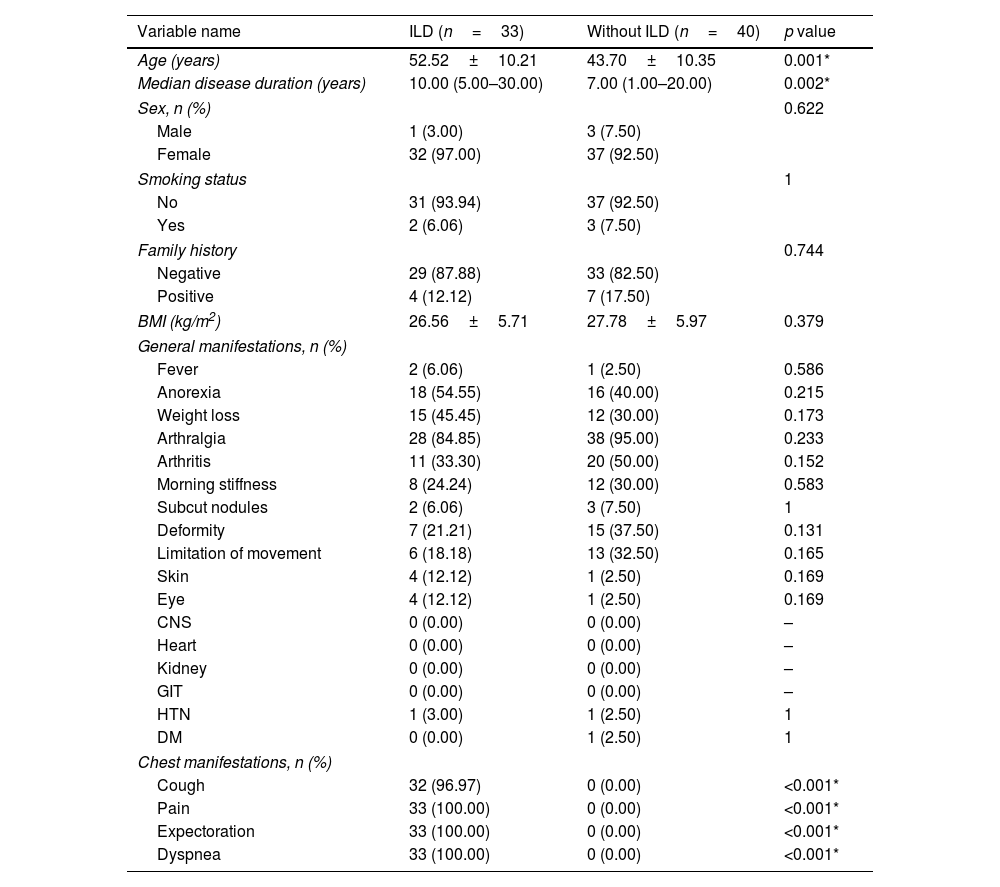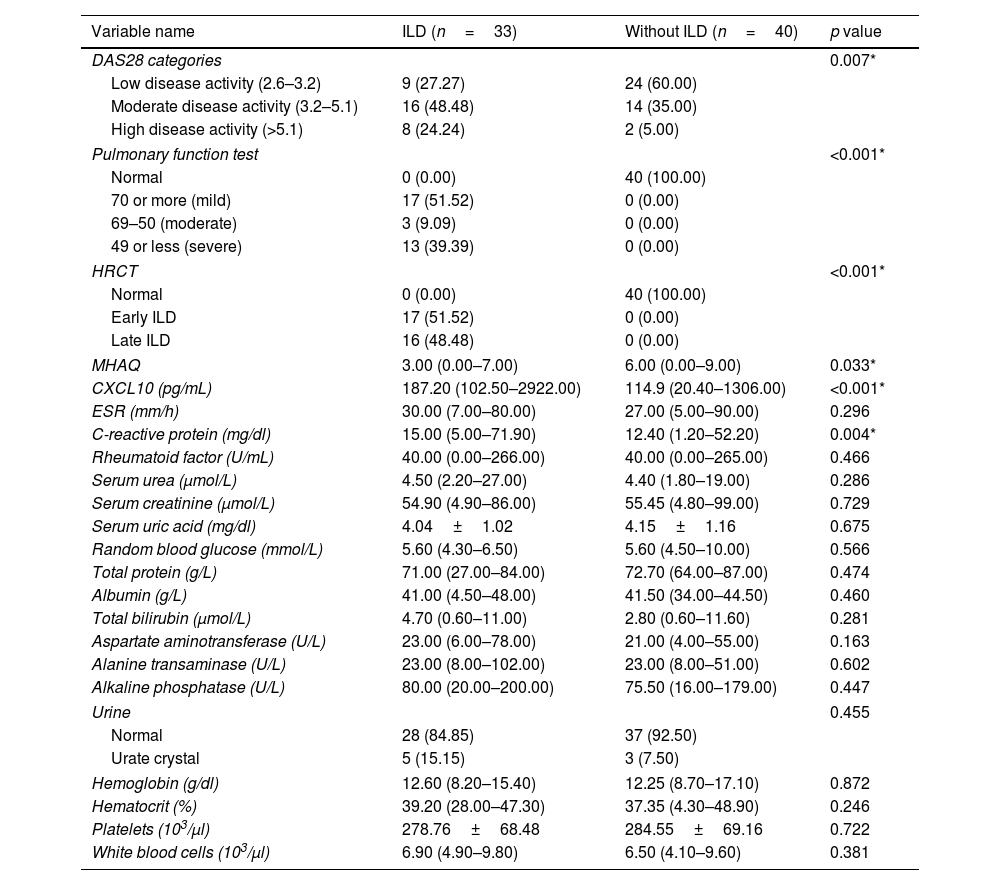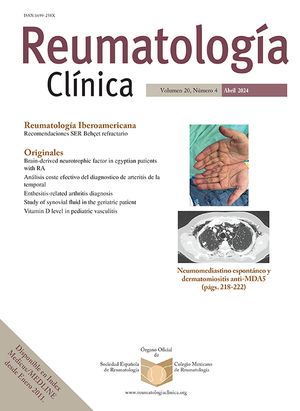Pulmonary involvement is a frequent and serious rheumatoid arthritis (RA) manifestation that affects 60%–80% of patients. CXCL10 is an inflammatory chemokine that regulates different biological responses, such as chemotaxis, angiogenesis, and inflammation.
AimThis study aimed to identify the role of CXCL10 as a peripheral blood marker of RA-ILD and its correlation with disease activity.
Patients and methodsThis cross-sectional study included 73 patients with RA (33 with ILD and 40 without ILD). Pulmonary function tests and high-resolution computed tomography were performed. Blood samples were taken for complete blood count and blood chemistry analysis, and human interferon-inducible protein 10 (IP-10/CXCL10) level. Statistical Package for the Social Sciences (version 22) was used for all statistical calculations.
ResultsThe serum CXCL10 level and patient age (r=.393, p=.024), disease duration (r=.756, p<0.001), erythrocyte sedimentation rate (r=.516, p=.002), C-reactive protein (r=.539, p=.001), and rheumatoid factor (r=.663, p<.001) revealed a significant positive correlation. Furthermore, the Modified Health Assessment Questionnaire (r=−.418, p=.015) revealed a significant negative correlation. Patients with RA-ILD show significantly higher CXCL10 than those without ILD (p<.001).
ConclusionCXCL10 is a useful RA disease activity biomarker and is an RA-ILD-sensitive biomarker, also CXCL10 is a significant predictor for development of RA-ILD.
La afección pulmonar es una manifestación frecuente y grave de la artritis reumatoide (AR) que afecta al 60-80% de los pacientes. CXCL10 es una quimiocina inflamatoria que regula diferentes respuestas biológicas, como la quimiotaxis, la angiogénesis y la inflamación.
PropósitoEste estudio tuvo como objetivo identificar el papel de CXCL10 como marcador en sangre periférica de RA-ILD y su correlación con la actividad de la enfermedad.
Pacientes y métodosEstudio transversal que incluyó a 73 pacientes con AR (33 con EPI y 40 sin EPI). Se realizaron pruebas de función pulmonar y tomografía computarizada de alta resolución. Se tomaron muestras de sangre para hemograma completo y análisis de química sanguínea y el nivel de proteína 10 inducible por interferón humano (IP-10/CXCL10). Se utilizó el paquete estadístico para las ciencias sociales (versión 22) para todos los cálculos estadísticos.
ResultadosEl nivel sérico de CXCL10 y la edad del paciente (r=0,393, p=0,024), la duración de la enfermedad (r=0,756, p<0,001), la velocidad de sedimentación globular (r=0,516, p=0,002), la proteína C reactiva (r=0,539, p=0,001) y el factor reumatoide (r=0,663, p<0,001) revelaron una correlación positiva significativa. Además, el Cuestionario de Evaluación de la Salud Modificado (r=−0,418, p=0,015) reveló una correlación negativa significativa. Los pacientes con RA-ILD muestran un CXCL10 significativamente mayor que aquellos sin ILD (p<0,001).
ConclusiónCXCL10 es un biomarcador útil de la actividad de la enfermedad de AR y es un biomarcador sensible a AR-ILD, también CXCL10 es un predictor significativo para el desarrollo de AR-ILD.
Artículo
Comprando el artículo el PDF del mismo podrá ser descargado
Precio 19,34 €
Comprar ahora















